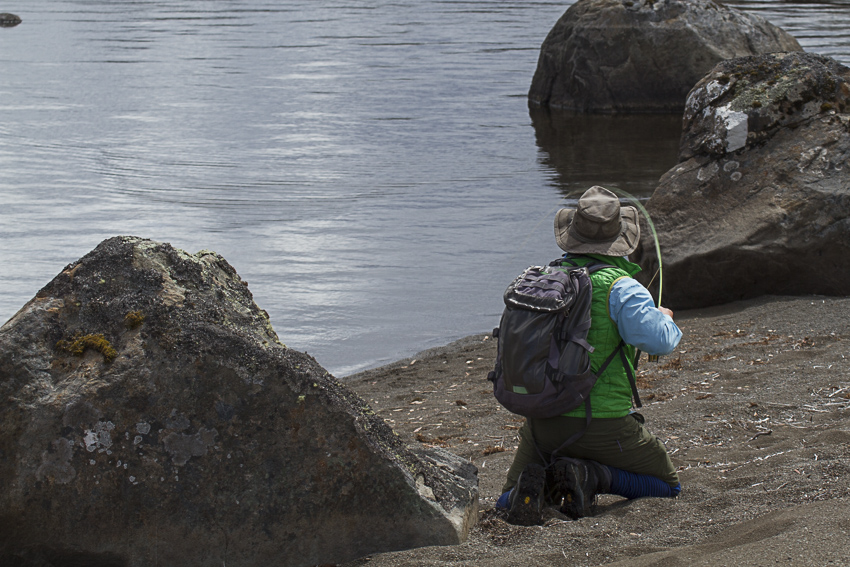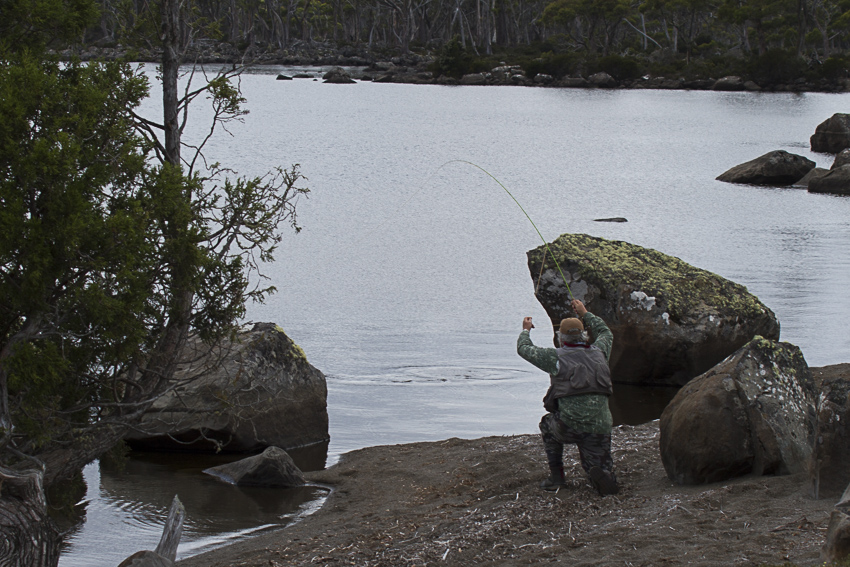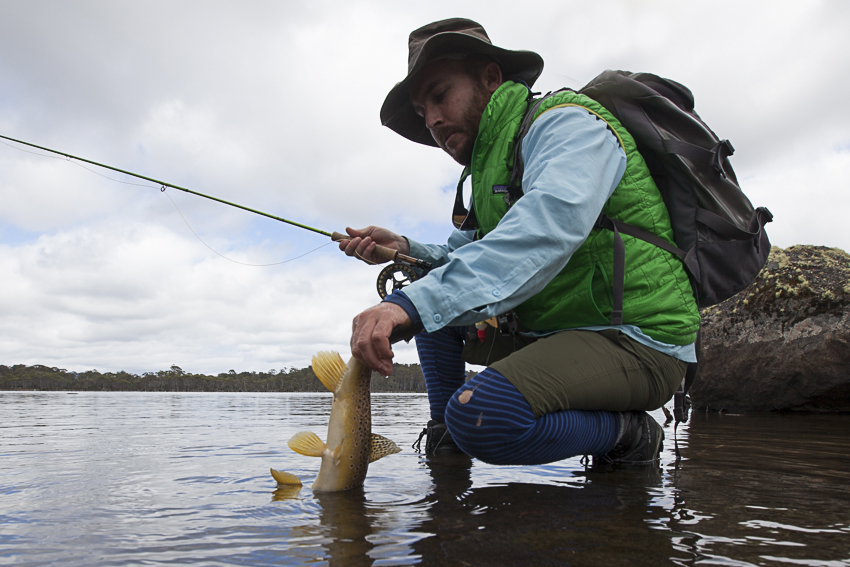Wombats, wallabies and wild brown trout were our bedfellows for the morning of New Year’s day 2016. It’s not often that I get to fish with mates during peak season, so it was pretty cool to have three days at our Western Lakes wilderness huts, complete with the usual array of Tasmanian animals, as well as Australian fishing legend and Sage Fly Rod Ambassador, Peter Morse. The fact that it is the peak of the mayfly season didn’t harm either!
It was good to see that Pete had done his research – I like medium-actioned fly rods, and two of the new medium actioned Sage MOD fly rods were strapped to his pack, along with matching 2016 CLICK fly reels and RIO Single Handed Spey lines. All of the gear that I’d wanted to test out west!
While brewing the morning coffee, I took the chance to grab the five weight MOD and spey line, and have a bit of a warm up cast. Short casting (under 20 foot) was efficient, with a short stroke and medium tempo – pretty good considering that the Single Handed Spey taper doesn’t really begin to kick in till 25 feet. Next cab off the rank was medium length (30-50 foot) casts into the wind, starting with a 20 foot pickup, which was shot to 50 foot with one false cast. It went like a rocket! The MOD bends fairly low down the blank, and it was a good match to my naturally open casting stance, and longer casting stroke. The taper of the Single Handed Spey line, featuring a lot of weight and thickness between 27 and 35 feet made an excellent combination for effortless casting, and generated high line speed at this range.
The casting tempo of the MOD is well suited to a casual medium pace – you can certainly speed up the tempo for a fast presentation to a cruising trout, and the MOD handles it well, but medium pace brings out the best in the rod. The biggest difference between the Sage MOD and the other favourite medium-action rods that I own was the recovery speed – the 5wt MOD unloads the medium taper with a faster line speed than I’ve experienced in similar modern tapers, which would later prove to be great for controlled, accurate presentations.
And what about the fishing? To say that the fishing was close-range would be an understatement. With fish tailing on shallow water mayfly nymphs, the fishing was super visual, super-subtle, and super close. The majority of the fish targeted were in the 10-20 foot range, with the odd fish at 40 foot. As part of our tactics, we’d keep the line stored on the reel, and the leader in hand. As soon as a tailer or finning trout was spotted, we’d sprint towards the nervous water, adopt a low profile and peel off line as quick as possible, and present (hopefully) within three foot of the trout’s snout. The new super-large arbor CLICK reel was brilliant at this – ripping line off the reel was made simple by the large arbor. Smaller diameter reels would have been left in a birdnest of line, or worse, it would have cost crucial seconds to get the line off, and opportunities would have been missed. And the old-school drag is pretty cool, just ask Morsie who saw his backing on a three-pounder, as it rooster-tailed off the flat and into the distance.
One final thing. At the end of the last day, we took some time to put single-handed spey techniques to test with the line–primarily simple roll casts and more complex snake-rolls. The RIO Single Handed Spey line was brilliant, the taper enabling us to shoot from 30 foot to 55 in a simple roll. Add a single haul and it flies out past 60 foot with loads of line speed. While mucking around with it, I couldn’t help but think about all the anglers that struggle with a roll cast, and how good this line is for not only casting rolls and spey casts, but how good it is as a line to learn roll casts. The taper, which features a thick and weighty mid-taper, enables the caster to feel the load of the all-important D-loop, keeps the belly riding high on the water, and makes the basic techniques a cinch. I can’t recommend it highly enough as a learning tool for anyone wanting to improve roll-casting, or get into basic spey techniques.
Daniel Hackett, RiverFly 1864
Photo credits Peter Morse / Daniel Hackett



